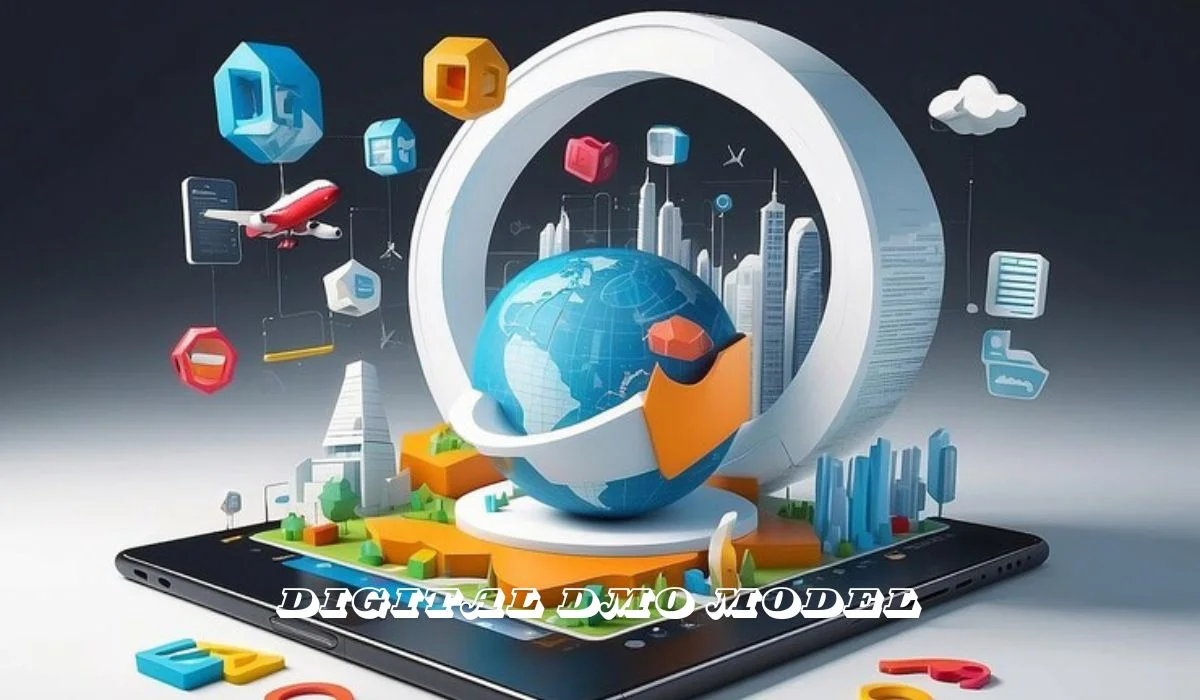In today’s rapidly evolving digital landscape, the traditional Destination Marketing Organization (DMO) model is increasingly becoming outdated. As consumer behavior shifts towards mandatory digital engagement, destination marketers face the challenge of adapting to this new paradigm. This article explores the digital DMO model, delving into its significance, advantages, and the transition from traditional methods.
Introduction to the Digital DMO Model
The digital DMO model represents a transformative approach to destination marketing, leveraging digital tools and strategies to engage with consumers effectively. Unlike the traditional DMO model, which relies heavily on print media and conventional advertising, the digital DMO model emphasizes interactive and personalized experiences. This shift reflects broader changes in consumer behavior and technological advancements.
Understanding the Traditional DMO Model
To fully appreciate the digital DMO model, it’s crucial to understand its predecessor. The traditional DMO model primarily focused on print advertisements, brochures, and travel guides. This approach often involved broad, generalized messaging aimed at a wide audience. While effective in its time, the traditional model struggles to meet the demands of today’s digital-savvy consumers.
The Rise of Digital Engagement
With the advent of digital technology, consumer engagement has moved online. Social media, mobile apps, and websites have become central to how people discover and interact with travel destinations. The digital DMO model capitalizes on these platforms, offering targeted and interactive experiences that resonate with modern travelers.
Key Components of the Digital DMO Model
The digital DMO model is built upon several key components that distinguish it from traditional approaches. These elements work together to create a cohesive and engaging destination marketing strategy.
1. Data-Driven Insights
Data plays a pivotal role in the digital DMO model. By leveraging analytics tools, destination marketers can gain valuable insights into consumer behavior, preferences, and trends. This data-driven approach allows for more precise targeting and personalized messaging, enhancing the overall effectiveness of marketing campaigns.
2. Interactive Digital Platforms
Interactive platforms, such as social media and mobile apps, are integral to the digital DMO model. These platforms enable real-time communication and engagement with potential visitors. Marketers can use these channels to share dynamic content, respond to inquiries, and foster a sense of community around the destination.
3. Content Personalization
Content personalization is another hallmark of the digital DMO model. By tailoring content to individual preferences and behaviors, destination marketers can create more relevant and appealing experiences for their audience. This approach enhances engagement and increases the likelihood of converting potential travelers into actual visitors.
4. Integrated Marketing Channels
The digital DMO model emphasizes the integration of various marketing channels. Instead of relying on isolated campaigns, destination marketers employ a cohesive strategy that spans multiple platforms. This integration ensures a consistent message and reinforces the destination’s brand identity across different touchpoints.
Transitioning from Traditional to Digital DMO
Shifting from a traditional DMO model to a digital approach involves several key steps. This transition can be challenging, but it is essential for staying relevant in today’s digital age.
1. Embracing Digital Tools and Technologies
The first step in transitioning to the digital DMO model is adopting the necessary tools and technologies. This includes investing in analytics platforms, social media management tools, and content management systems. By embracing these digital resources, destination marketers can streamline their operations and enhance their marketing efforts.
2. Training and Skill Development
Training and skill development are crucial for a successful transition. Destination marketers must acquire new skills and knowledge related to digital marketing, data analysis, and content creation. Providing ongoing training and support will ensure that the team is equipped to navigate the digital landscape effectively.
3. Redefining Marketing Strategies
Redefining marketing strategies is essential for aligning with the digital DMO model. This involves shifting from broad, generalized messaging to targeted, data-driven campaigns. Marketers should focus on creating personalized content and leveraging interactive platforms to engage with potential visitors.
4. Measuring and Analyzing Performance
Measuring and analyzing performance is a key aspect of the digital DMO model. By tracking key performance indicators (KPIs) and analyzing campaign results, destination marketers can assess the effectiveness of their strategies and make data-driven adjustments. This iterative approach allows for continuous improvement and optimization.
Challenges and Solutions in the Digital DMO Model
While it offers numerous benefits, it also presents challenges that destination marketers must address. Understanding these challenges and implementing effective solutions is crucial for success.
1. Navigating Digital Overload
Digital overload can be a significant challenge in it. With an abundance of content and information available online, it can be difficult to capture and maintain the attention of potential travelers. To overcome this challenge, marketers should focus on creating high-quality, engaging content that stands out from the competition.
2. Ensuring Data Privacy and Security
Data privacy and security are paramount in it. As destination marketers collect and analyze consumer data, they must ensure that this information is protected and used responsibly. Implementing robust security measures and adhering to data protection regulations will help build trust with consumers.
3. Adapting to Rapid Technological Changes
The rapid pace of technological change can pose a challenge for destination marketers. Staying up-to-date with the latest digital tools and trends is essential for maintaining a competitive edge. Marketers should invest in continuous learning and stay informed about emerging technologies and best practices.
Case Studies: Successful Implementations of the Digital DMO Model
Examining successful implementations of it can provide valuable insights and inspiration for destination marketers.
Case Study 1: Destination X
Destination X successfully transitioned to it by leveraging social media platforms and interactive content. By creating engaging social media campaigns and utilizing data-driven insights, Destination X increased its online presence and attracted a younger audience.
Case Study 2: City Y
City Y implemented a comprehensive digital marketing strategy that included personalized content and targeted advertising. By integrating various digital channels and analyzing performance data, City Y achieved significant growth in tourist visits and enhanced its brand reputation.
Future Trends in Destination Marketing
As technology continues to evolve, destination marketing will likely see new trends and innovations. Staying ahead of these trends will be crucial for maintaining a competitive edge.
1. Artificial Intelligence and Machine Learning
Artificial intelligence (AI) and machine learning are expected to play a significant role in the future of destination marketing. These technologies can enhance data analysis, automate content creation, and improve personalization, further advancing it.
You Might Also Like: Přeldač : Revolutionizing Translation with AI-Powered Precision
2. Virtual Reality and Augmented Reality
Virtual reality (VR) and augmented reality (AR) are emerging technologies that can provide immersive experiences for potential travelers. By incorporating VR and AR into their marketing strategies, destination marketers can offer virtual tours and interactive content that showcases the destination’s unique features.
3. Voice Search Optimization
With the increasing use of voice-activated devices, optimizing for voice search will become essential for destination marketers. By focusing on voice search optimization, marketers can ensure that their content is easily discoverable through voice queries and enhance their online visibility.
Conclusion
The shift from the traditional DMO model to it represents a significant transformation in destination marketing. Embracing digital tools, data-driven insights, and interactive platforms allows destination marketers to engage with modern travelers more effectively. While the transition presents challenges, the benefits of it, including enhanced personalization and improved targeting, make it a worthwhile endeavor.
By staying informed about emerging trends and continuously adapting their strategies, destination marketers can navigate the digital landscape and achieve success in the evolving world of destination marketing.
FAQs
- What is the digital DMO model?
It leverages digital tools and strategies to engage with consumers, offering interactive and personalized experiences compared to traditional marketing methods. - How does the digital DMO model differ from the traditional DMO model?
Unlike the traditional model, which relies on print media and generalized messaging, it emphasizes data-driven insights, interactive platforms, and personalized content. - What are the key components of the digital DMO model?
Key components include data-driven insights, interactive digital platforms, content personalization, and integrated marketing channels. - What challenges might destination marketers face with the digital DMO model?
Challenges include navigating digital overload, ensuring data privacy and security, and adapting to rapid technological changes. - How can destination marketers successfully transition to the digital DMO model?
Successful transition involves embracing digital tools, providing training, redefining marketing strategies, and measuring performance.




